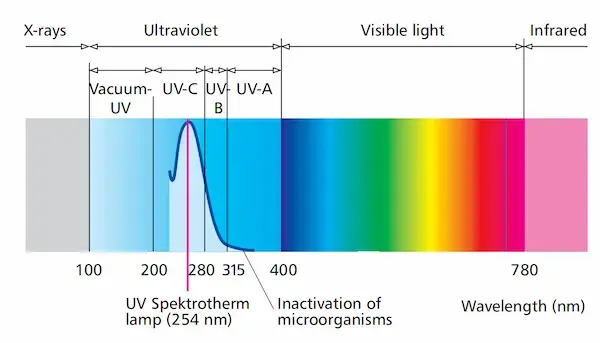Ultraviolet (UV) light is found occupying the portion of the electromagnetic spectrum between X-rays and visible light. The sun emits ultraviolet light; however, much of it is absorbed by the earth’s ozone layer. Just as visible light consists of different colors that become apparent in a rainbow, the UV radiation spectrum is divided into three regions called UVA, UVB and UVC.

UV-A wavelength: 315-400 nm. Not absorbed by the ozone layer
UV-B wavelength: 280-310 nm. It is mostly absorbed by the ozone layer, but some do reach the Earth’s surface.
UV-C wavelength: 100-280 nm. It is completely absorbed by the ozone layer and atmosphere.
Short-wavelength UV-C is the most damaging type of UV radiation.
A unique characteristic of UV light is that a specific range of its wavelengths, those between 200 and 300 nanometers (billionths of a meter), are categorized as germicidal – meaning they are capable of inactivating microorganisms, such as bacteria, viruses and protozoa. This capability has allowed the widespread adoption of UV light as an environmentally friendly, chemical-free, and highly effective way to disinfect and safeguard water against harmful microorganisms.
Usage: Used in curing, aging, air sterilization, sewage treatment, water treatment, ozone detection, arc monitoring, and other industries.

Leave A Comment